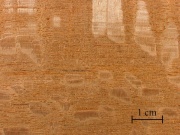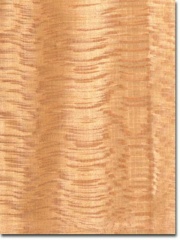Lacewood
Description
A common name for numerous trees producing striking patterns in their cut planks. Two significant species are:
1) A pink wood with a distinctive ornamental figuring obtained from species Cadwellia sublimis native to Australia. Lacewood has a straight grain and coarse texture that is similar to Oak. Lacewood has a silver sheen and is used for veneer, inlays, cabinetry, flooring, boxes, and furniture. Also called silky oak, selano.
2) A reddish brown wood quartersawed from sycamore trees (Platanus orientalis) native to the eastern United States and southern Europe. It is sold commercially as lacewood because the quartersawed wood has a grain pattern with characteristic flake-shaped markings. The surface is fine-grain and it polishes to a high gloss. The wood is used for tool handles, furniture, flooring, and veneer.
Synonyms and Related Terms
lace wood;
1. Cadwellia sublimis; silky oak; northern silky oak; selano; bulk oak; oongaary; golden spanglewood
2. Platanus orientalis; platano (It.); sycamore; Oriental plane
Physical and Chemical Properties
1. Tall tree, often reaching 30 m. Bark if thin. Leaves are entire and large, reaching 65cm length. Flowers occur in spring-summer producing profuse cream-white coverage, woody oval follicles and numerous winged seeds. Specific gravity = 0.60 (air dry); weight = 37 ppcf
Additional Images
Resources and Citations
- Ralph Mayer, A Dictionary of Art Terms and Techniques, Harper and Row Publishers, New York, 1969 (also 1945 printing)
- Random House, Webster's Encyclopedic Unabridged Dictionary of the English Language, Grammercy Book, New York, 1997
- Wikipedia: http://en.wikipedia.org/wiki/Oriental_Plane (Accessed Dec. 9, 2005)



